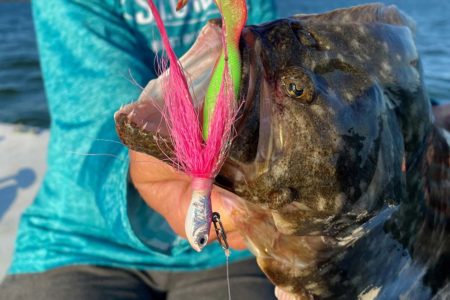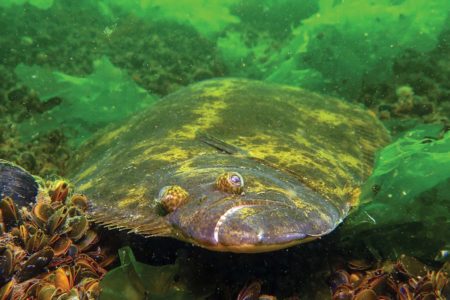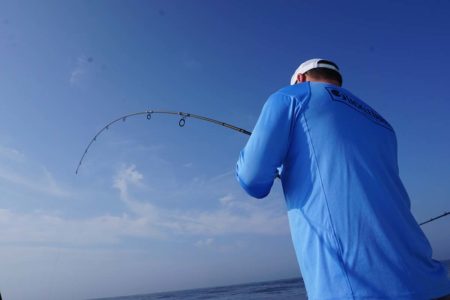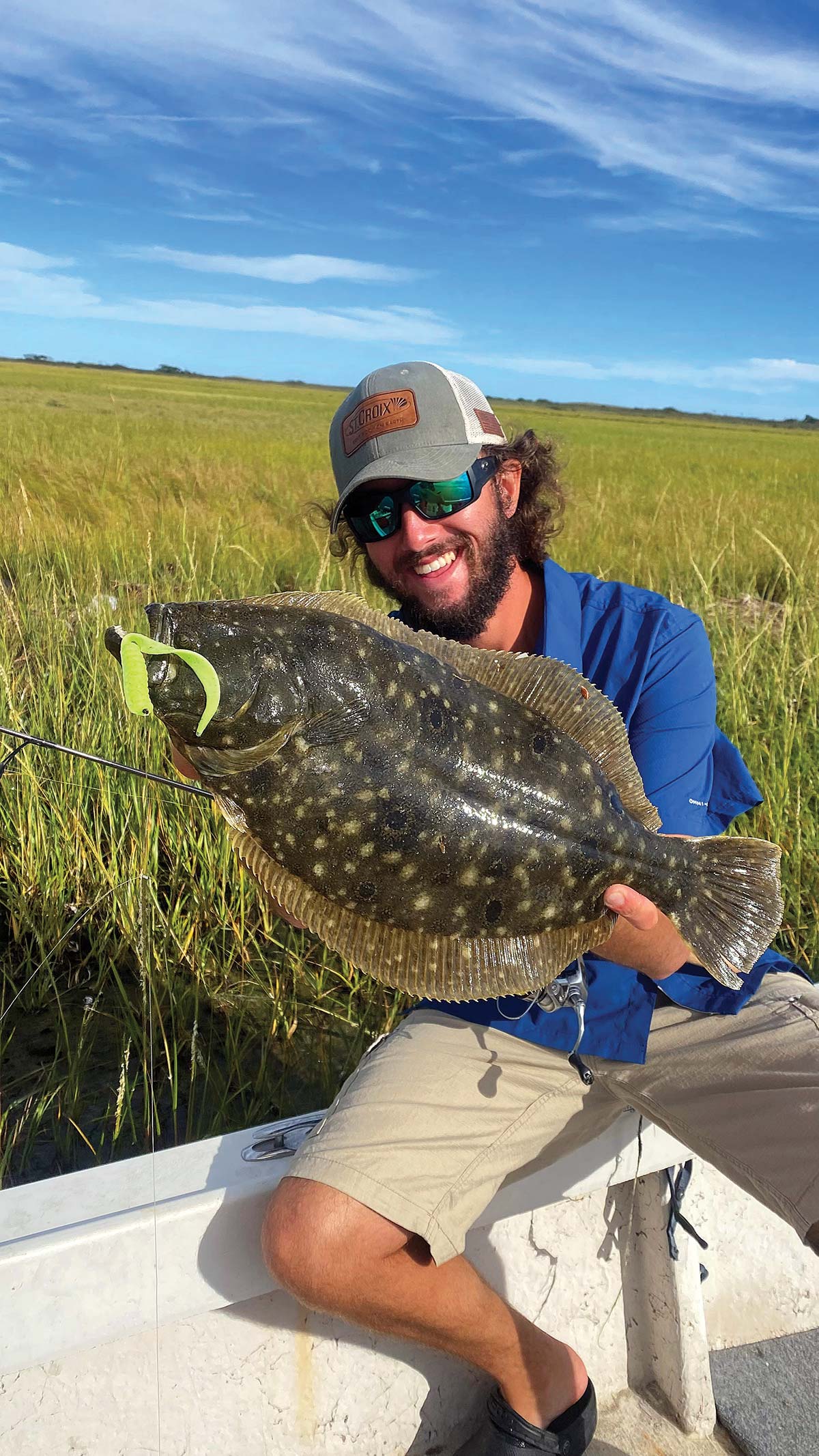
The proper approach to one of the first places fluke will appear this spring.
Throughout most of our coverage area, fluke season (or summer flounder if you prefer) opens during the month of May and depending on exactly where you are they could be in your waters already when the clock strikes midnight on opening day. One place you can bank on findning early-season fluke is in the shallow or what some refer to as “skinny water” in your region.
If you ask me what my definition of “skinny water” is I would describe it as water that’s anywhere from 3 to 12 feet deep. Most of the time, these are the water depths you’ll find in a back bay setting behind some sort of barrier island, tidal river or intracoastal waterway. You could even consider parts of a harbor skinny water.
Whatever your unique setting might be, just stay within the general guidelines of the depths described above when you want to fish the “skinny.”
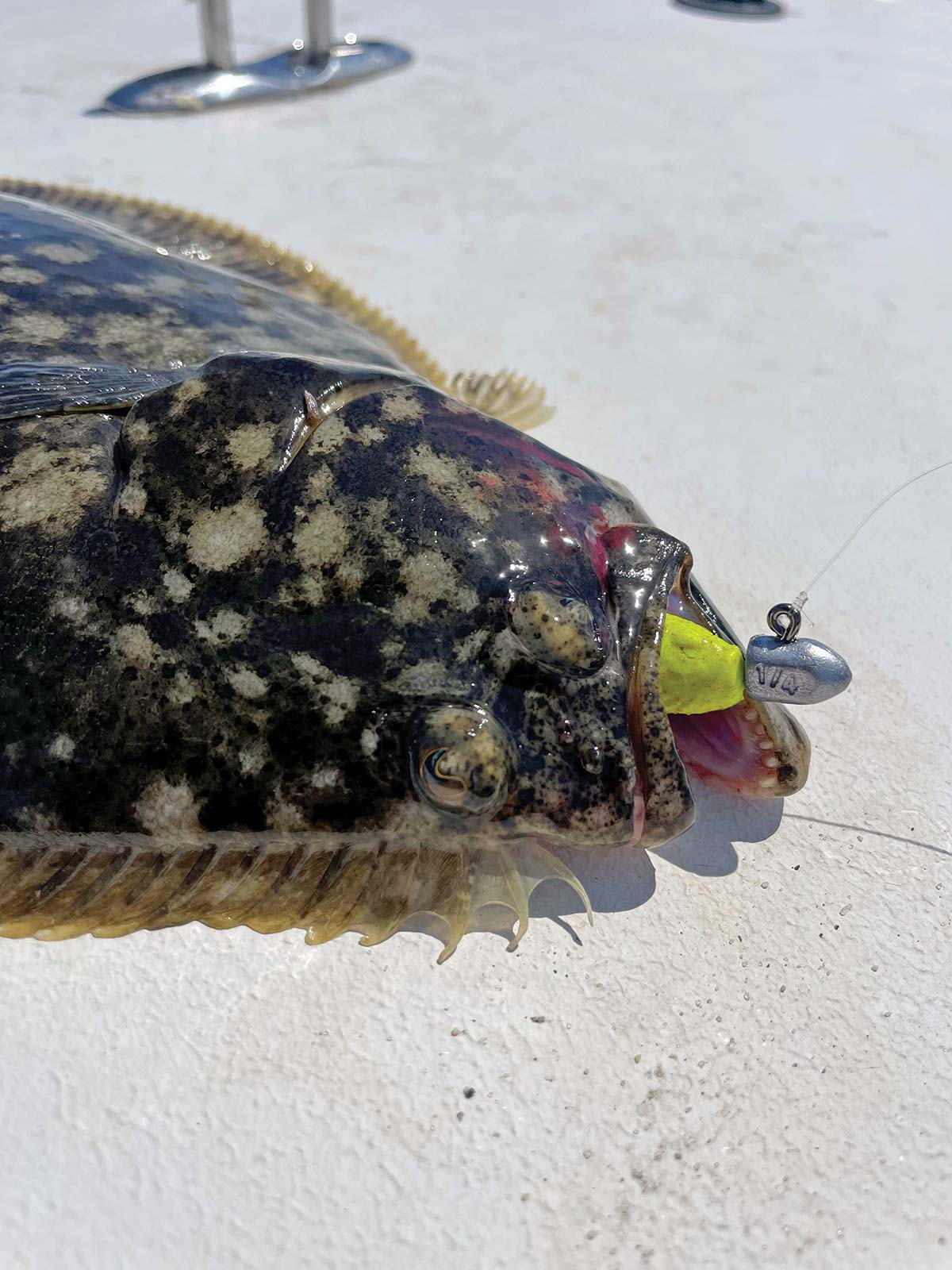
The Draw
The first question when fishing an area with certain characteristics is why fish are attracted to that spot? There could be many explanations but it usually leads back to the forage fish that are in the area, maybe due to some other factors like water temperature, marine vegetation or just the way water moves in that spot. During the earlier portion of the year especially, the water temperature is warmer in these shallow water areas in comparison to deeper spots or the ocean. The warmer water is attributed to the sun being able to beat down on the flats or marshes and penetrate to the bottom. On the ebbing tide, the warmer water comes off the flats and mashlands and provides a more ideal environment for baitfish with the increase in temperature and right behind them are predatory fish.
These shallow areas in the back thrive during the spring and they’re a good pick for your first fluke trips of the season. If you have any sort of electronics on your boat, you will be able to tell the noticeable temperature change from an area closer to ocean water versus somewhere shallow. Be cognizant of these changes when targeting fish in these areas.
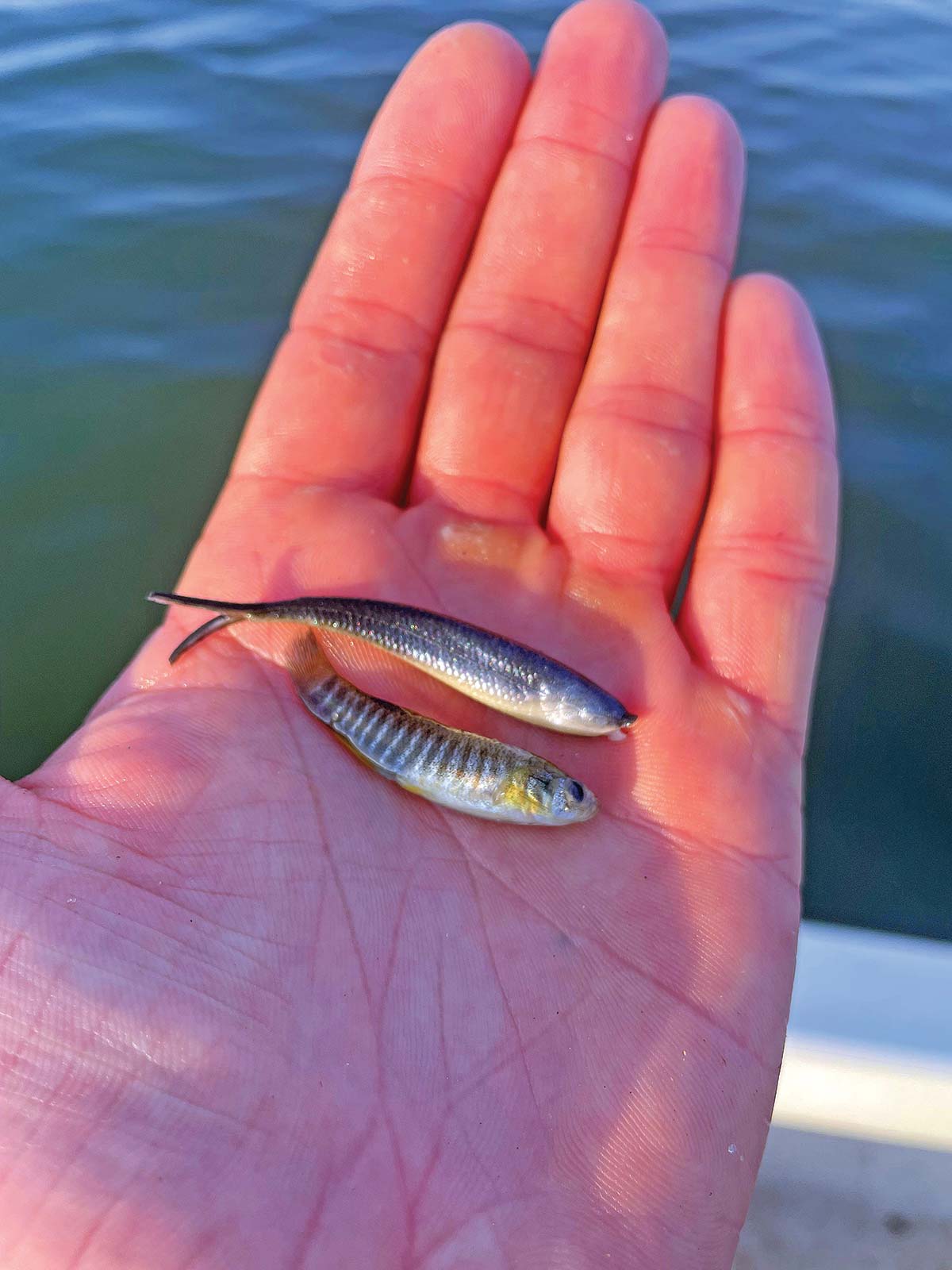
Backwater Picks
I’ve certainly noticed that in comparison to the summer, the forage of fluke in the back areas is quite different in the spring. Like the change of seasons, the bait they feed on changes too. Spring will see a healthy mix of small killies, spearing, grass shrimp and tiny crabs in these areas. The phrase “match the hatch” stands true once again for this type of fishing. You can certainly use your natural baits like spearing and squid strips and have some success but a lot of my light tackle fishing in the shallow water is done using artificials.
Gulp and Fishbites are two that shine for my fluke fishing in the spring. Especially when fishing areas with a lot of small forage that are around during the spring months. The Fishbites 5-inch Dirty Boxer Curly Tail has been a staple for me in most recent years. While I do put them under the artificial category, they’re actually made from fish and release a heavy scent when they hit the water — but they remain fresh for a few years and are always ready to go in their reseal-able bag.
While I love the Fishbites curly tail design and have had epic success with it, it still leaves me needing a profile that’s closer to a lot of the small forage fish I see in the backwaters during the earlier months of the fluke season. Many of these baits are in the 1- to 3-inch range so they would be considered rather small. I found that when I was able to match their size more closely, I saw better results. Gulp offers a large array of different styles, shapes and sizes, making it possible to dial in the exact size of the bait that the fluke are feeding on. The Swimming Mullet is available in sizes as small as 3 inches, which is similar to what I see in the water, and if I want to get super technical about it, Gulp even makes a Minnow that come in 1, 2-1/2, and 3 inches that mimics some of the small killies almost identically. At times I even found myself second guessing these tiny baits, wondering if fluke could even see the offering, but I can assure you they pick it up quite well when bounced near the bottom.
Now for colors, we have an entire spectrum to choose from these days. Sometimes I find myself getting wrapped up in it. What I can say is that from my experience they all work! But, on the other hand, I consider myself a simple angler and when it comes to color I always come back to a select few. They are: white, chartreuse, pink and a natural color. This doesn’t mean you shouldn’t experiment, because that’s all part of the fun of fishing too, right? I like to switch between the ones I mentioned and as a general rule of thumb I’ll employ the chartreuse color when I think the water is a bit more stained. On the clearest of days, with the best water clarity, the natural color often gets first pull.
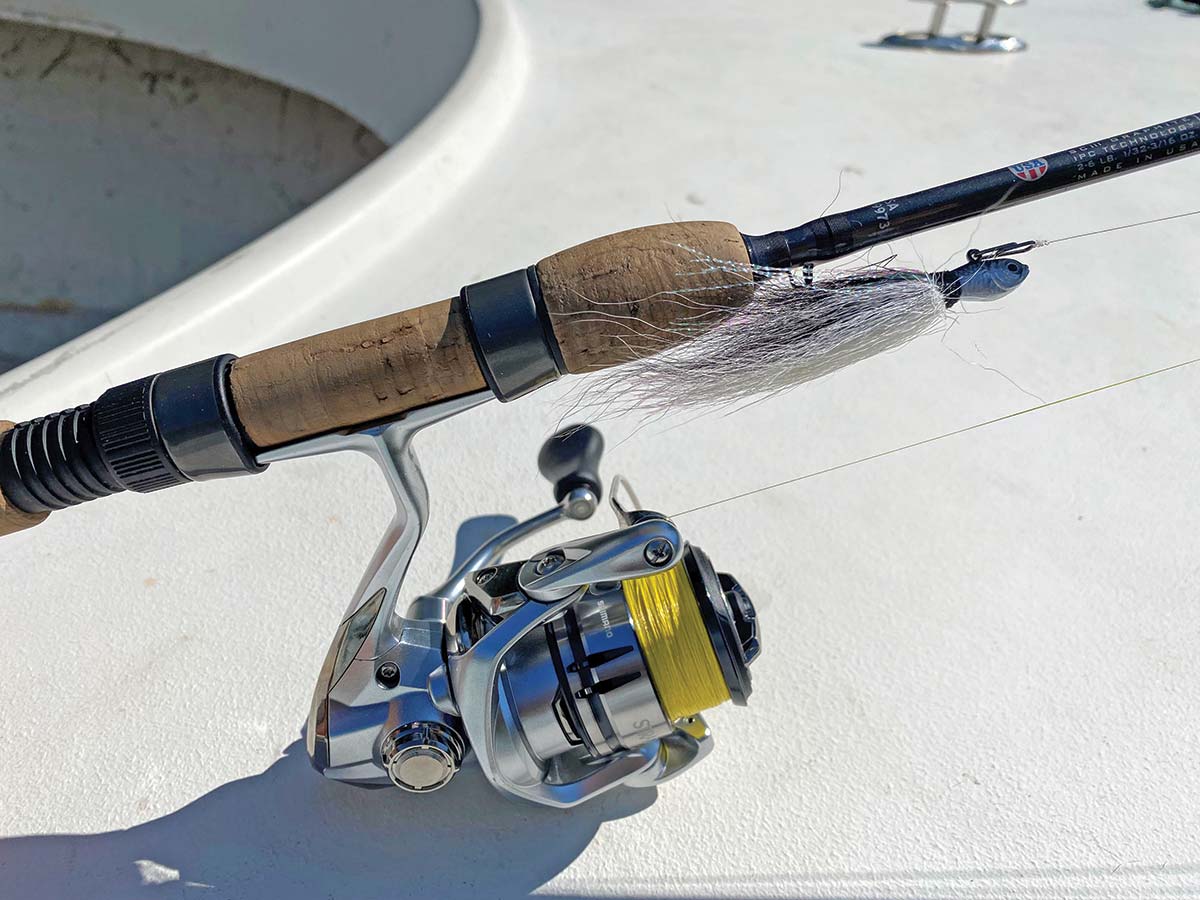
How Light Is Too Light?
I you’ve attended my seminars or read past editorials or articles, you’ll know I’m a big advocate for light tackle fishing. Even when I do mention light tackle during my seminars and club talks, it’s assumed that I’m referring to 15- to 20-pound braid and actually in some cases this is light tackle but for this back bay fluke fishing, the line on my reel is either 8- or 10-pound braid and believe it or not, 5-pound braid made more than a few catches for me last year too! And the next thing you might be wondering is how many fish I lost due to going so light? The answer is none. With a properly set drag, landing fluke in the shallows on light tackle was no problem. It was actually more fun when the fish were able to run more than they usually do with heavier line and a tighter drag. A light leader matches the light main line too. My general rule of thumb is if I’m using 10-pound braid, the leader will be 20 pound, in other words, a 10 pound increase over the braid.
If you still need convincing, think of it this way; some years back when I started using the snap-jigging technique taught to me by Fred Golofaro and Captain John Paduano, they stressed the importance of using light line for working the jig properly. The line was no more and no less than 10-pound braid. With a properly set drag I was able to land stripers over 40 pounds with that line. If you think of the comparison to fluke, the biggest fluke you could encounter in the back waters during the spring might be 10 pounds, and that would be a huge specimen. Normally the fish being caught are at or below keeper size. So my thinking was that if I could catch 40-plus pound stripers on 10 pound braid, catching significantly smaller fluke on 5-pound braid would be no problem — and it was not a problem at all. But remember, drag is key.
When you’re fishing light line you need a light rod and reel setup. I love having fun with this type of fishing and if an undersized fluke can put a bend in the rod it’s the right one for me. In the these shallow depths you’re going to be fishing with lightweight jigs, and again, 10-pound (or lighter) braid. Don’t call me crazy but I’ve been known to use jigs as light as 1/8-ounce in extreme cases. Aside from the extremes though, 1/2 ounce is standard for me to be able to get down and present to fluke in the shallows. If the current slows down a bit I’ll drop down to 1/4 ounce and if it picks up or the wind starts to kick I’ll bump the weight up to 3/4 ounce. The key to all of this is knowing when you need to make more or less contact with the bottom and making the switch. And the only way to know all of this is going out there and getting the feel for it yourself.
A moderate/fast action rod fits the bill. You’ll be able to feel that small jig because of the fast tip and the moderate action will give you a nice uniform bend when you hook up. pair that rod with a reel that balances out the combo. I’m typically using a rod in the 6 to 7-foot range paired with a spinning reel in the 1500 to 2500 size. Going to your local tackle shop and pairing different rods and reels together is the best way to see what you like before you pull the trigger on one. And remember to please buy the combo from that same tackle shop also.
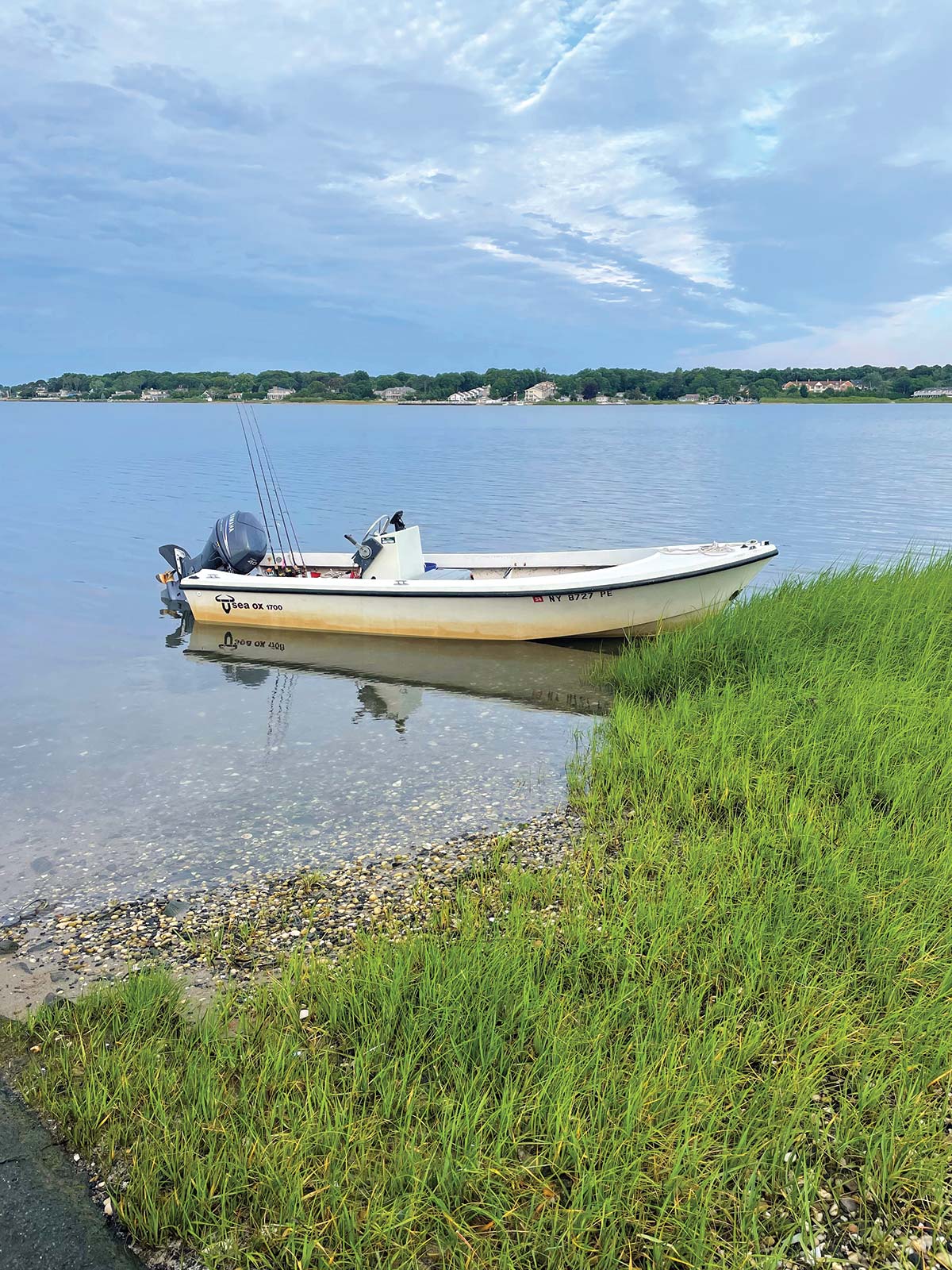
Hair Or Bare
There’s no need for additional weights or sinkers, the jig at the end of your line should be enough. Anything more would defeat the purpose of fishing light. You could always drift the standard fluke rig and pick away at fish but for this light type of back bay fishing, using a jig head or bucktail jig stays in line with the trend of fishing light and goes better with some of the other techniques I’ll be talking about. Both styles of lures rigged with soft plastics have done wonders for me for this light style of fluking.
| DEBATING OVER LEADER |
| The ongoing debate about leader selection continues again with fluke. My personal thoughts are they’re certainly not line shy and the use of a fluorocarbon vs. monofilament will not make a difference from a fluke’s sight standpoint but as far as abrasion resistance goes, fluorocarbon gets the nod. Keep in mind that fluke do have a set of sharp teeth as well so sticking with a more abrasion-resistant fluorocarbon could benefit you after catching several fish. I’ve been using the Seguar Inshore Fluorocarbon due to its properties and value. These spools come with 100 yards of material and offer similar characteristics to other fluorocarbon products on the market. |
Spro bucktails are my first choice for light tackle fluking since they do may those super small sizes such as 1/4 and 3/8 ounce that I enjoy using. The jigheads can be pretty generic but keep in mind that when selecting a jighead, the hook on the jig should match the size of the bait. You don’t want a huge hook gap when using a smaller 3-inch Gulp Minnow. I’ve been using the Z-Man HeadlockZ HD which hold soft baits really well and save me the trouble of guessing the weight because they have the weight stamped into the lead.
Since I’m usually switching out my jig weights at least once or twice a trip for fishing these back bay areas, I like to incorporate the use of a small clip at the end of my leader for doing so with ease and without having to cut and retie. Smaller Tactical Anglers clips are my standard but I’ve used small Spro Duo Lock Snaps before and had no problems whatsoever.
A Good Tease
The one addition that I feel enhances the single jig at the end of the line would be a teaser — in the form of either a soft plastic rigged on a baitholder hook or a hair teaser also tipped with a small soft plastic. My teaser is tied in anywhere from 14 to 18 inches above the jig with a Dropper Loop that’s about 3 inches in length. The measurements provided here are just guidelines and none of them have to be exact.
Remember, when you tie a teaser into your rig, the sink rate will become slower, so you may need increase the weight of you jig a bit to keep it all in the strike zone. In spite of this, I’ve found that using a teaser only increased my catch rate, so it’s worth the extra rigging. I attribute this to the simple fact that there is just more going on in the water with two baits rigged in tandem and maybe due to the idea that fluke are always looking up so there’s more there to catch their eye.
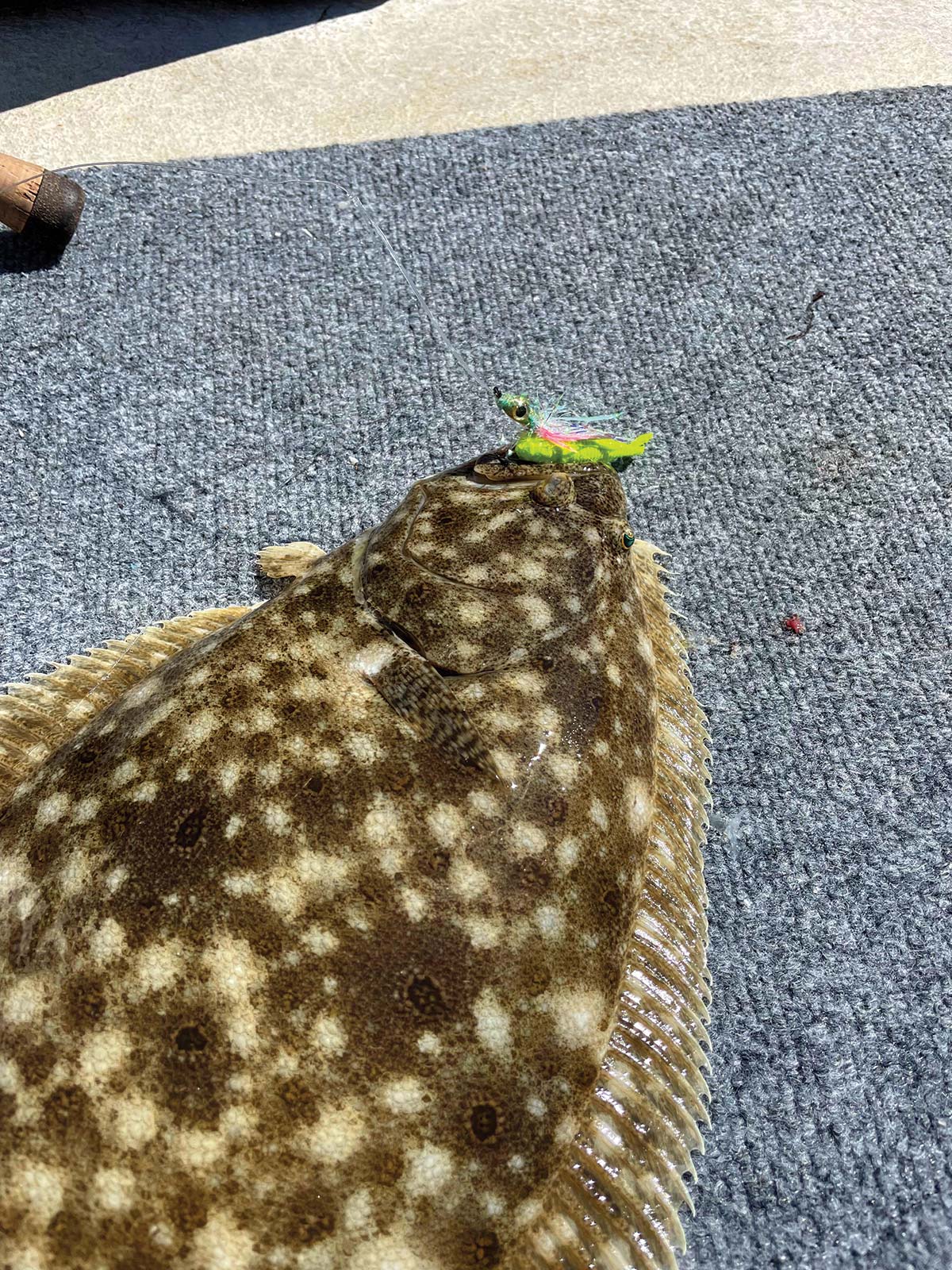
Approaching Prime Targets
Just like any other style of fluke fishing, the main objective here is to drift over bottom that would be ideal for fluke. This might include but is not limited to eelgrass, mussel beds, sand bottom drop-offs and right up tight to a sod bank or marsh. You’re going to want that drift regardless, whether it might be by the tide, wind or even artificially-aided with the use of a Minn Kota trolling motor or even using the power of your main motor by bumping it in and out of gear. The basic guideline is to keep yourself moving around 3/4 to 1-1/4 mph. Any faster might result in fluke passing up your offering because it’s moving too quickly, any slower may not grab the interest of a fluke.
Remember when I mentioned that I like to use jigs for this type of fishing? The reason is that jigs easy to cast and in certain situations this can benefit you. Say for example you find a piece of structure that is holding the bulk of the fish. Nothing says you can’t anchor up or Spot Lock and cast to that productive piece and work it over and over instead of having to motor back up to start a new drift each time. This technique has proven itself to be the difference between a good and great trip on certain days. Having the spinning reel when this opportunity presents itself is a literal game changer.
| HOW TO TIE A SKINNY WATER FLUKE RIG |
| https://www.youtube.com/watch?v=4sW086QEPjo |
If you consider yourself a fluke fanatic like myself, try the light tackle approach when fishing these back water areas. Aside from not having to fish with the extra weight all day, this finesse approach will introduce a sportier feel to this type of fishing which may be a real eye opener for all the other kinds of fishing you enjoy.
